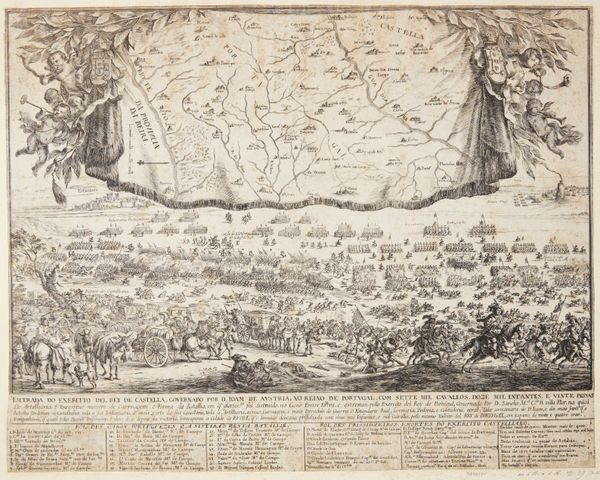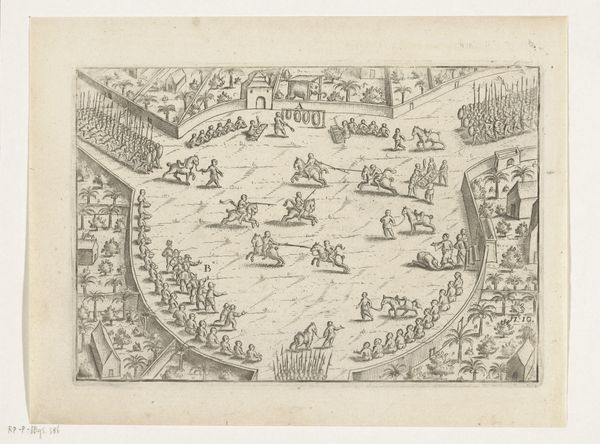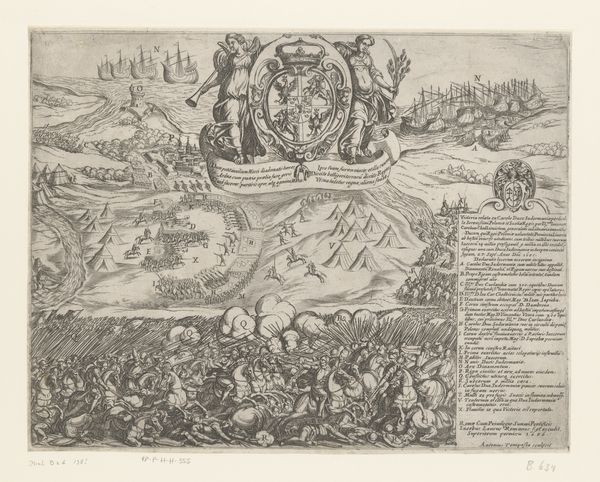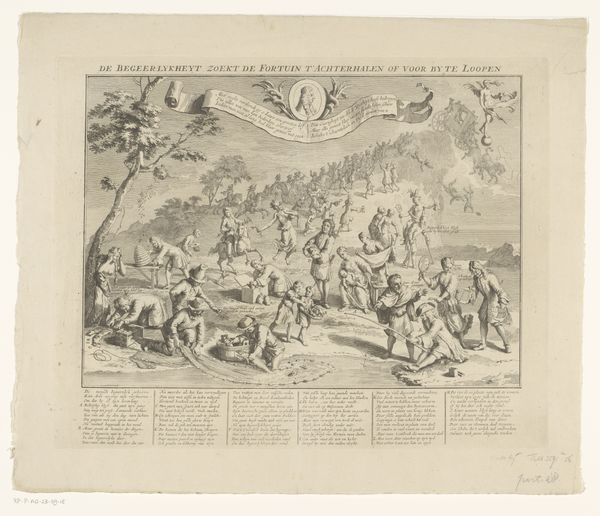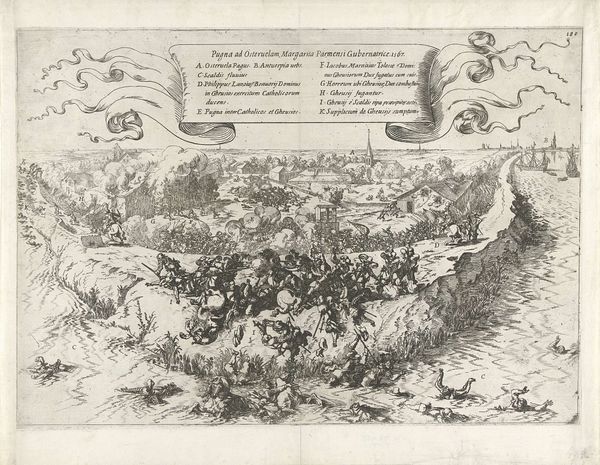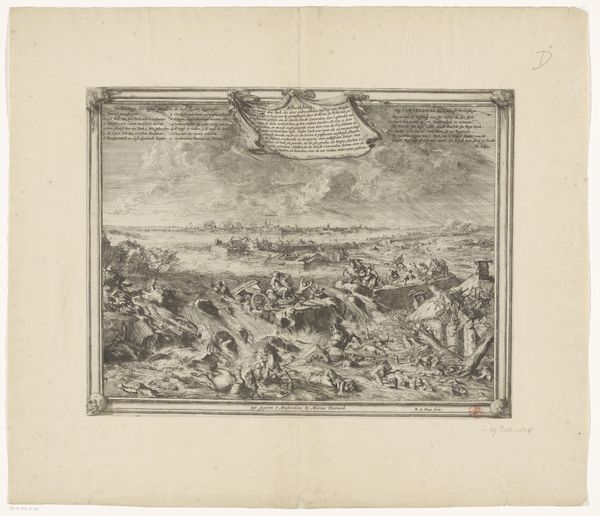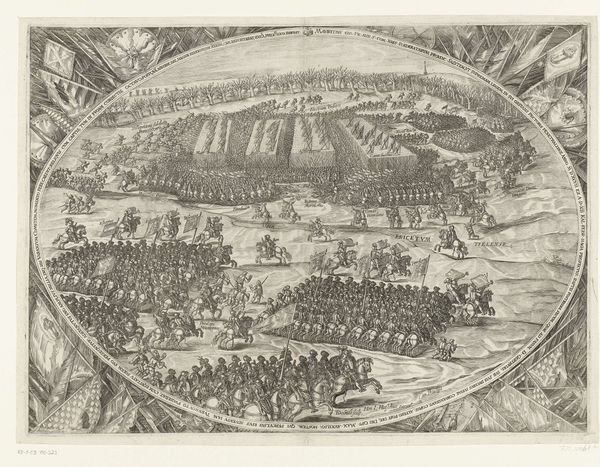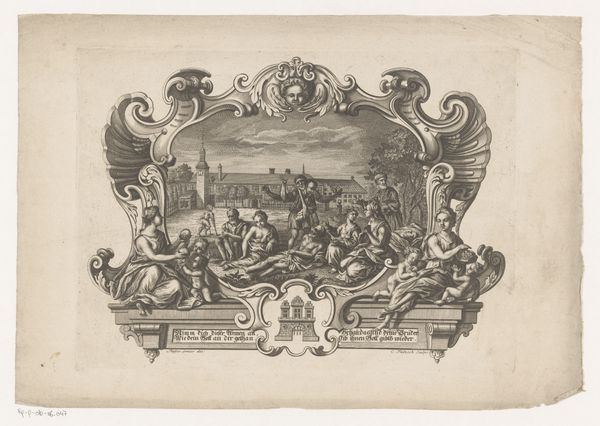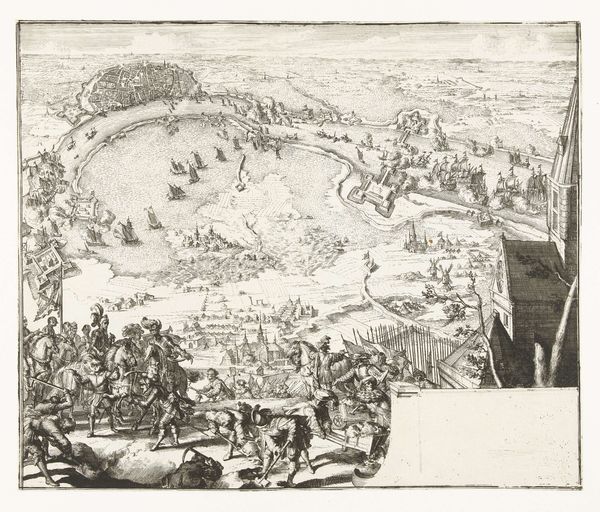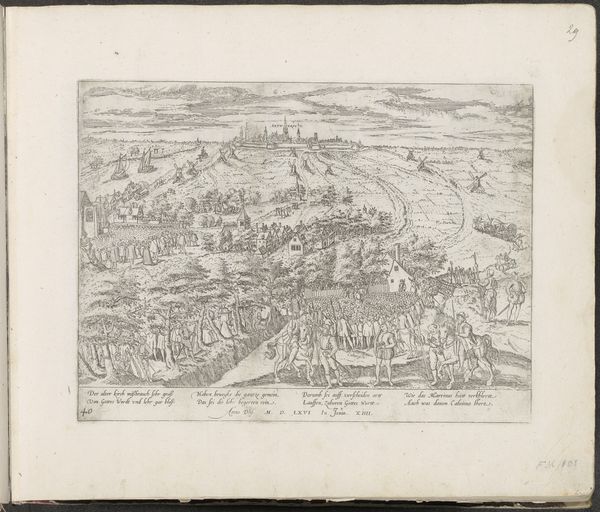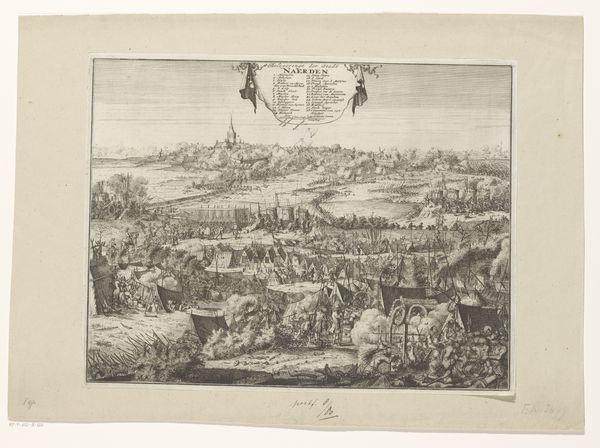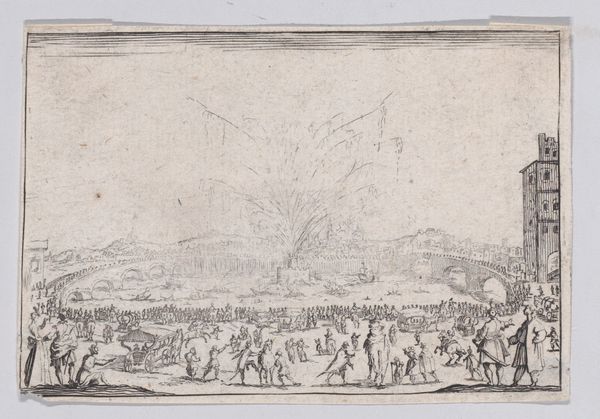
engraving
#
baroque
#
landscape
#
line
#
cityscape
#
history-painting
#
engraving
Dimensions: height 295 mm, width 420 mm
Copyright: Rijks Museum: Open Domain
Curator: Up next, we have a baroque-style engraving titled "Slag bij Oosterweel, 1567" or "The Battle of Oosterweel, 1567", dating back to 1637. The artist credited with this image is Pietro Carrocci. My first thought? Chaotic. Editor: Chaotic indeed! Look at the swirling mass of bodies, both human and equine, seemingly spilling out of the center of the print. It's like witnessing a maelstrom of violence rendered in delicate lines. The overall impression for me, despite the meticulous details, is overwhelmingly visceral. It's not pretty; it’s truthful. Curator: Truthful maybe. This engraving portrays a significant, yet quite brutal, historical event that transpired in Antwerp. The Battle of Oosterweel marked the suppression of a protestant attempt to breach the city in the early stages of the Eighty Years' War. Editor: So the swirling vortex we see mirrors not only physical turmoil, but spiritual conflict. The line work here becomes critical. Notice how carrocci doesn’t hold back in depicting violence. Soldiers drown in the water or get dragged in, while others desperately reach the city limits for safety. You see that city limits becomes an aspirational borderline dividing life and death, a strong symbolic depiction in chaotic fashion. Curator: Yes, the dogs barking away down in the right-hand corner further add to the hysteria. In this depiction, Carrocci is taking his cue from Mannerism and using every inch to squeeze in as much drama as possible. Though the work is relatively small in scale, it expands infinitely by the dramatic, violent gestures of combat, as they push upward toward the cartouche and crest at the top. What is captured by Carrocci in its detail, both visually and spiritually, has incredible presence. It continues to resonate as a complex visualization of political and religious tumult to this day. Editor: I agree entirely. Engravings tend to have such a stoic feeling about them, as though rendering this historical event to the utmost authority in depiction of detail in medium, as well as its visual and psychological complexity that reveals itself only with prolonged looking. The symbols—soldiers, city limits, dogs, death itself—and gestures intertwine to echo that deep resonance of this battle to this day. It has something akin to cultural permanence; fascinating.
Comments
No comments
Be the first to comment and join the conversation on the ultimate creative platform.

